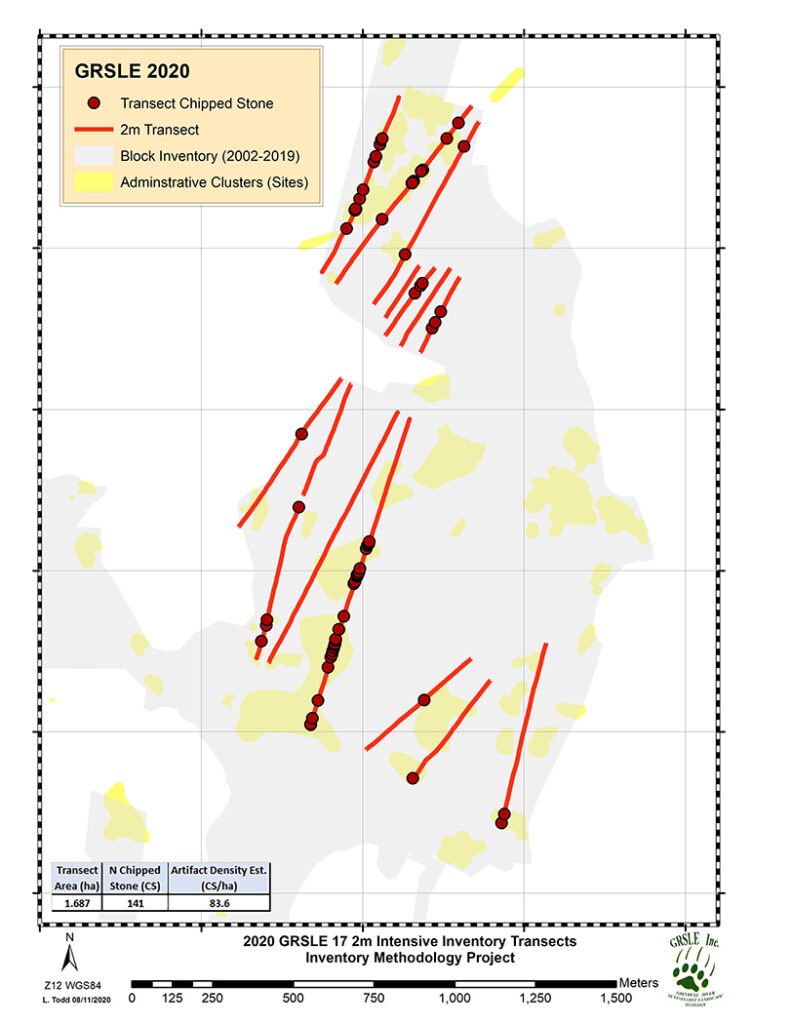The 2020 GRSLE field season was unusual. Not in terms of basic field methods or in reference to what we found. Teams coded nearly 6500 (N=6488) artifacts, mostly chipped stone (N=5083), but also with a few glass beads (N=12), ceramics (N=22), and steatite fragments (N=3) as well as assorted faunal remains and features. The key difference between 2020 and the 18 previous field seasons was the need to deal with Covid-19 – the need to employ field protocols and goals designed for team health rather than on research questions alone.
Bubble Building
In planning this year’s work, one of the concerns of team members was “what happens if one of us starts having Covid-19 symptoms when we’re in the Wilderness, miles from a trailhead/hosptital?” This led to two key elements of our summer’s work: 1) a two-week non-Wilderness intial session where vehicles were available for transport of sickened crew members, and 2) adherance to Covid monitoring, distancing, and mask use for a 14-day period to allow the team to be a Covid-free bubble for a final Wilderness session. The first (vehicle accessable) was fairly straight forward. Done that many times before, but it did change the topics and areas we investigated. The second — pandemic fieldwork — was a bit more of a challenge impacting both fieldwork and camp life.

New equipment to deal with. Didn’t know that infrared contactless thermometer would not work at outside temperatures less than 10 C (50 F) so first couple days got strange error message when tried to take team temperatures in the frosty mornings. Had to move daily health check to afternoon. Generally, fieldwork proceeded as normal, but needing lots of reminders to “put on your mask” or “step back a bit.”

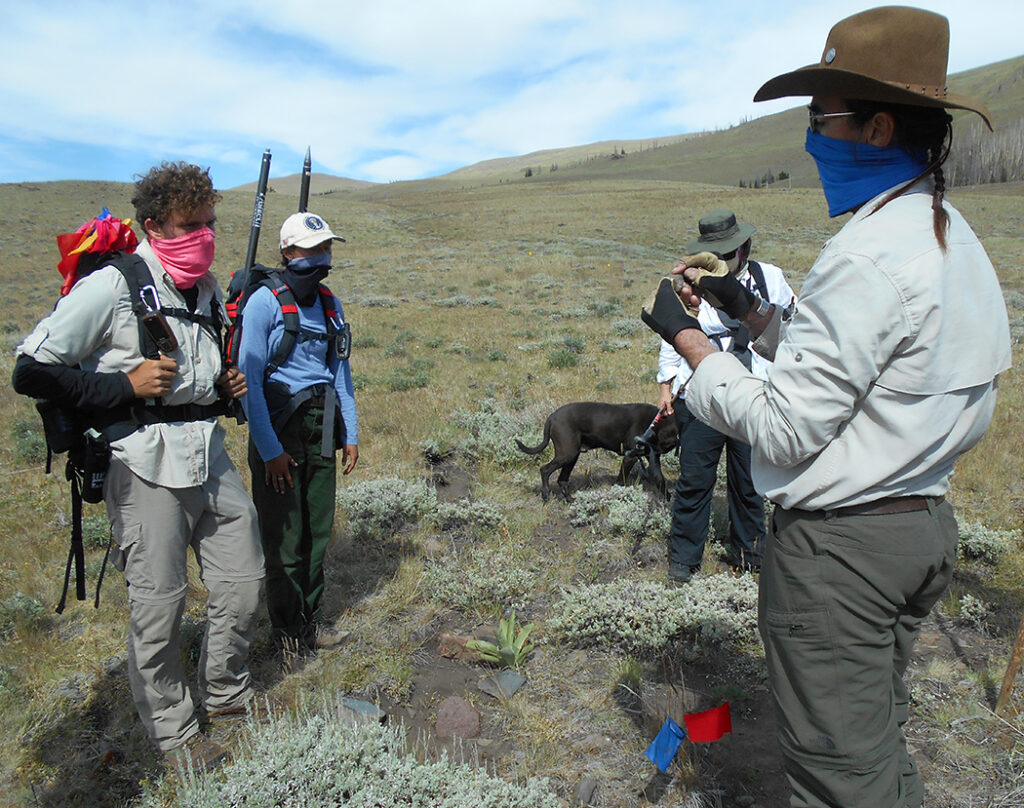
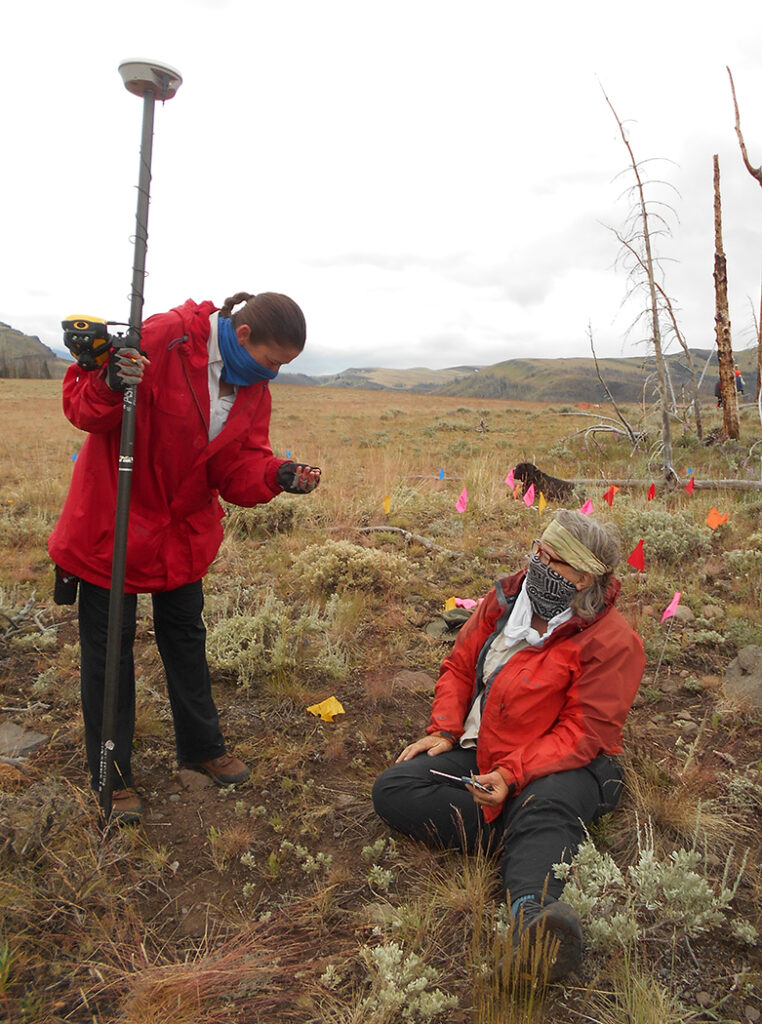




Overall, adding the Covid-19 awareness to our daily data collection and monitoring routine was not really a problem. Health data were collected along with chipped stone descriptions and for a team used to maintaining standard spacings on survey transects, adding a spacing requirement to camp life wasn’t that much of stretch. It worked and we could move on the phase two – work in Wilderness where access to medical treatment would be difficult and likely expensive. That worked well too, at least for the first three Covid-19-free days. Then there was the encounter with a band of bubble bursting, plan-disrupters who should have know better, but that’s another story entirely and other than this sarcastic quote from one of our team, won’t be dealt with here1:

Perhaps no one told them there is a pandemic.
Tewabe Negash

Data Collecting
2020 Fieldwork – COVID-19 ProtocolsOur field plans outlined a number of goals and Covid-19 concerns that combined with our research questions provided a framework for this summer’s work.
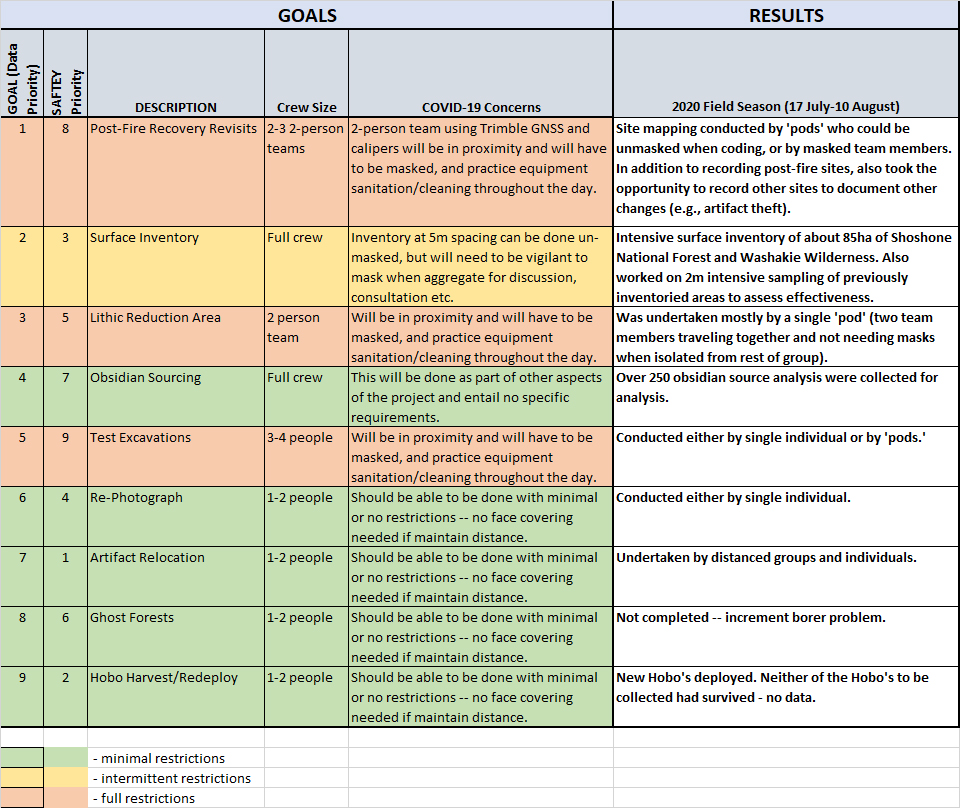
Site Revisits/Rephoto. We were able to undertake complete redocumentation of three sites that had recorded both before and soon after the 2006 Little Venus Fire and visited and did quick reconnaissance of several others. Data processing on artifact counts and other attributes is underway. Images of some of these revisits are shown here:
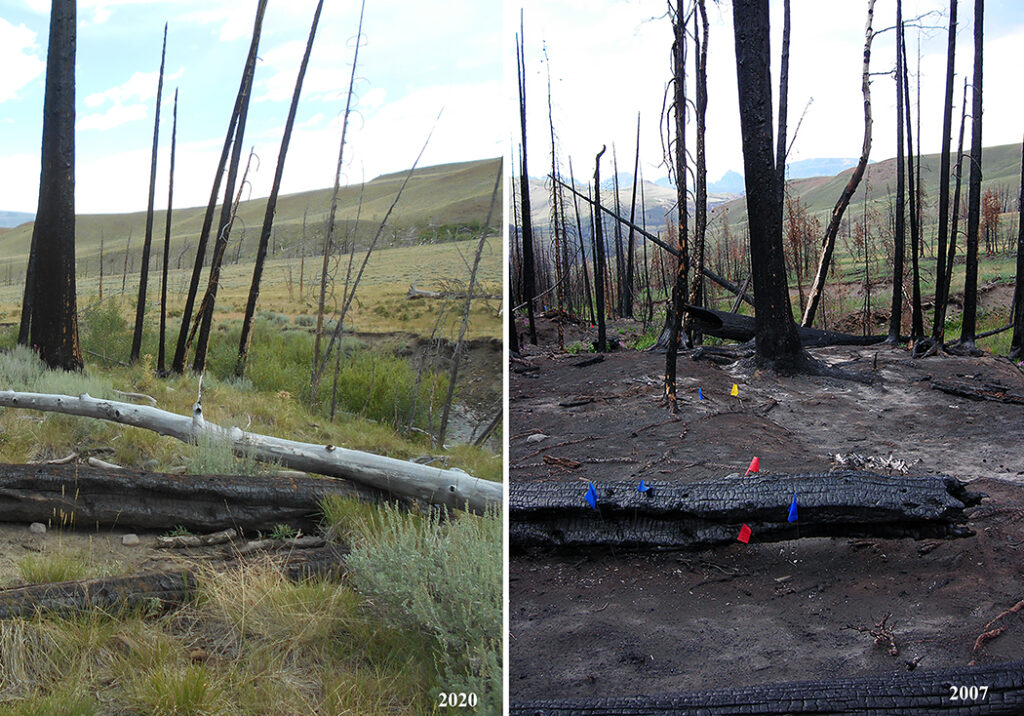
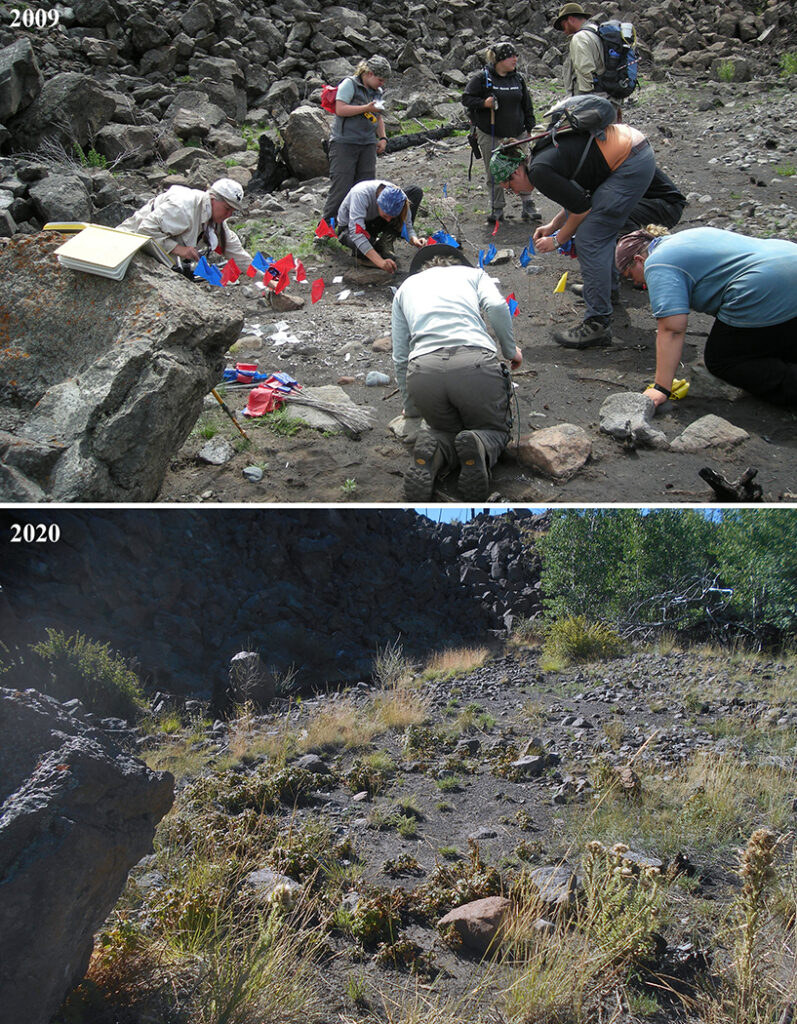

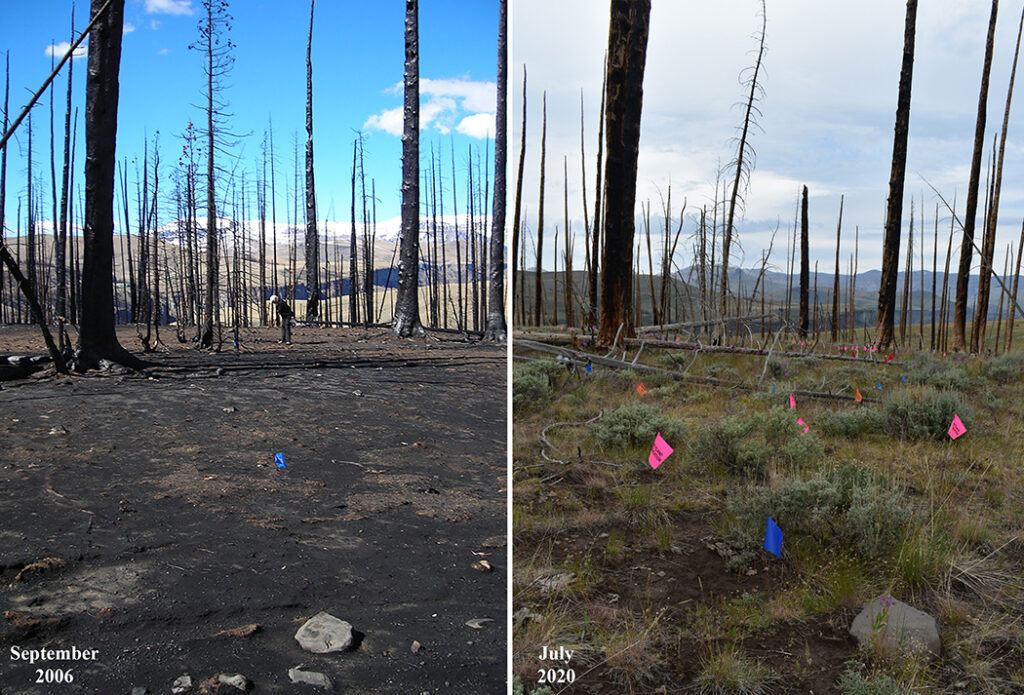

Surface Inventory. Although we had a small crew were able to complete Section 110 inventory of about 85 ha of previously un-examined areas at 5-10 m crew transect spacing. In addition to these standard examination methods, we experimented with other inventory approaches, in particular a series 3-person, 2m wide transects over areas that had previously been examined. Results of this methodological study are still being analyzed and interpreted, but in general it seems that in terms of artifact density measures (artifacts/ha inventory) and the ability to identify artifact clusters, the 2m transects may be an effective way to assess inventory reliablity. Here are some images from the 2m transect fieldwork and intial results:
Other Documentation: Although not listed in our orginal fieldwork plans, we also completed additional documentation of an important structure in the Washakie Wilderness — Venus Cabin. We see this building as being clearly eligible for nomination to the National Register of Historic Places (NRPH), and did some additional recording at the Cabin during our stay there.



2020 was an unusual, but utimately productive field season. Although almost cut short when our Covid-19 plans were disrupted, overall the results are encouraging and analysis and report preparation is underway.




